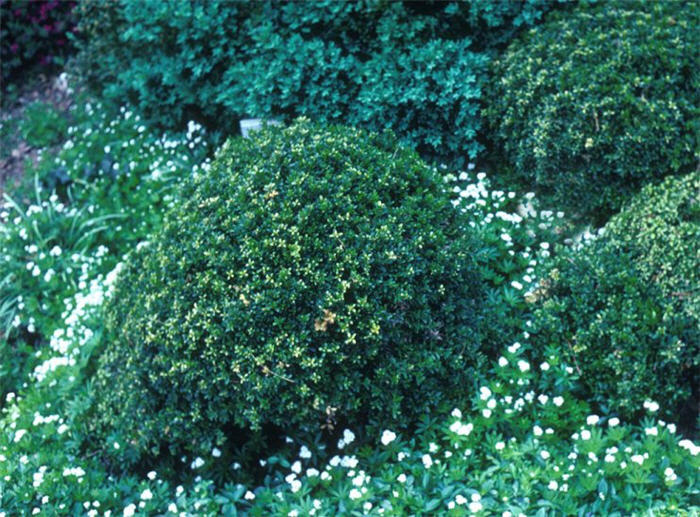| Botanical Name: Buxus microphylla 'Compacta' | |
| Common Name: Compact Dwarf Boxwood |

-
Anatomy
-
Culture
-
Design
Plant Type
Broadleaf Evergreen, Shrub
Height Range
Under 1'
Flower Color
n/a
Flower Season
n/a
Leaf Color
Dark Green
Bark Color
Brown
Fruit Color
n/a
Fruit Season
n/a
Sun
Half, Shade
Water
High
Growth Rate
Slow
Soil Type
Clay, Loam, Rocky, Unparticular
Soil Condition
Average, Rich, Well-drained
Soil pH
Acid, Neutral, Basic
Adverse Factors
n/a
Design Styles
English Cottage, Formal, Japanese, Mediterranean, Ranch, Spanish
Accenting Features
Unusual Foliage
Seasonal Interest
Winter
Location Uses
Entry, Perennial Border, Shrub Border, Foundation, Parking Strip, Patio, Raised Planter, Walkways
Special Uses
Hedge, Mass Planting, Small Spaces
Attracts Wildlife
n/a
Information by: Stephanie Duer
Photographer:
Photographer:
-
Description
-
Notes
This is a very compact boxwood, growing slowing to 1 foot tall but eventually spreading as wide as 4 feet. though it is evergreen, the dark green foliage takes on a bronze hue in the winter months. Use to edge a perennial, shrub, or foundation border, to line a walk, or as an evergreen accent in the perennial garden. Its generally uniform growth habit means little maintanance is required to keep it tidy.
Best grown in loamy, well-drained soil in part to full shade. Prefers snady-loam to clay-loam soils, acidic to slightly alkaline pH. Avoid cultivating around plants because they have shallow roots. Thin plants and remove dead/damaged branches annually as needed to improve air circulation. In our hot, dry climate, boxwood is best sited in a sheltered location that will protect it in winter from strong winds and full sun. Carefully remove snow accumulations from plants as quickly as practicable to minimize stem/branch damage. Though not a low water plant, when provided the right soil, light, and mulch, boxwood can manage on just one watering per week.